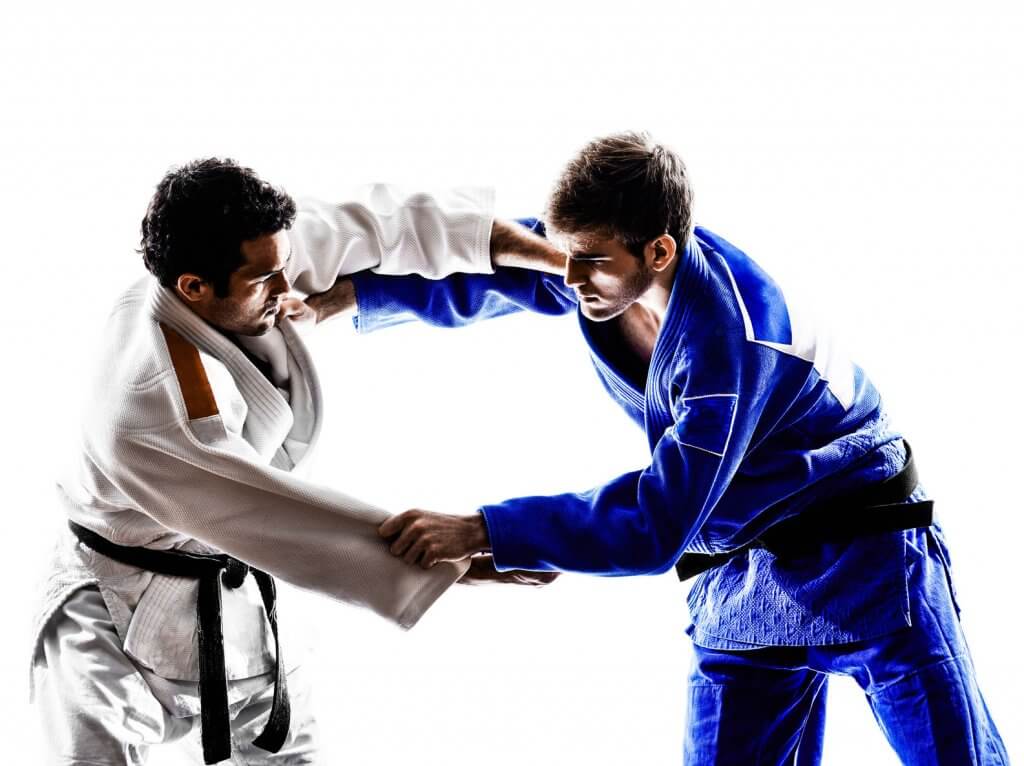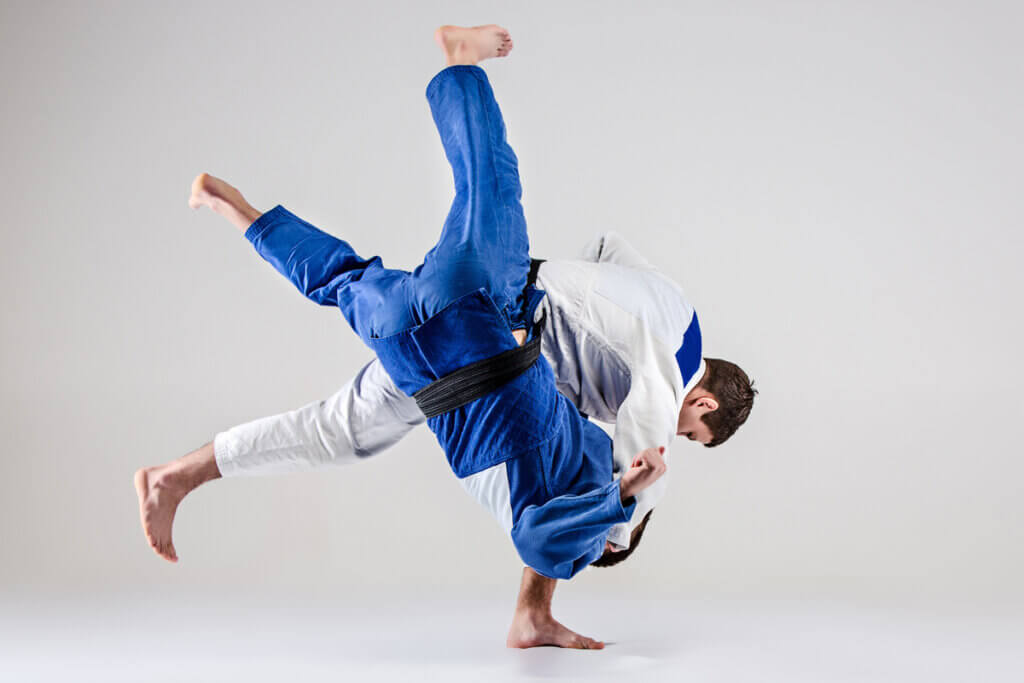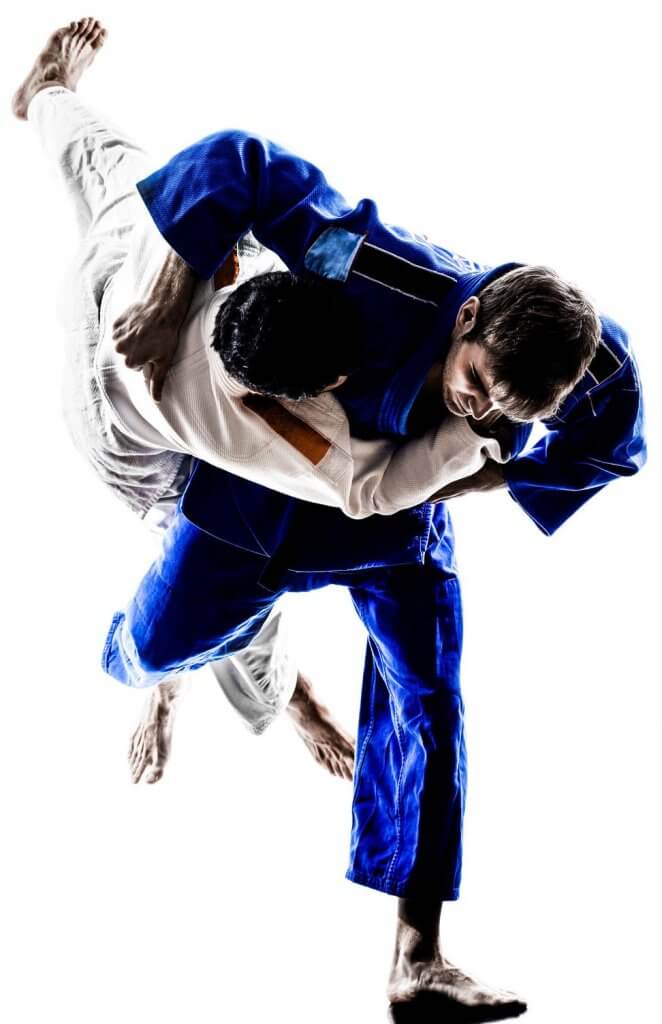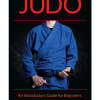The Four Parts of a Judo Throw
A judo throw requires establishing a firm grip (Kumi Kata), getting your opponent off-balance (Kuzushi), getting into position (Tsukuri), and executing the throw (Kake)

The proper execution of a judo throw can greatly benefit from the analysis and understanding the four main components to the move: establishing a solid grip, getting your opponent off-balance, getting your body into position for the throw, and executing the throw with different parts of the body acting in a coordinated way. While there may be some instances in which one or more of these components are not needed to execute a throw, those are the exception, rather than the rule.
These four components are explained in greater detail below:
1. Establishing A Firm Grip (Kumi Kata)
In competition and randori, the outcome of a match is influenced to a significant extent by the type of gripping control established in every bout. Grip fights are common, because if one opponent establishes a dominant grip, then that person can set the direction of the match and has a greater chance of applying a technique in a successful way. If you find yourself in a situation where you feel that you are vulnerable and an attack from the opponent is imminent, the cause may be related to the loss of grip control.
Gripping skills are the key to an effective throw, so it is an area that judokas should learn from the start of their training, develop it on their path to earning a judo black belt, and continue after that. They should plan gripping strategies for each bout and adapt their gripping tactics for each opponent. As former Olympian medalist and world judo champion Jimmy Pedro pointed out, “Gripping is one of the most important and fundamental judo skills … yet it is the least taught and understood skill of the game.” A useful resource is the DVD by Pedro Grip Like a World Champion.
2. Getting Your Opponent Off-Balance (Kuzushi)
Performing a successful judo throw, one that achieves maximum efficiency with minimal effort, requires first getting your opponent off-balance. You can get your opponent off-balance in eight directions. If you imagine that your opponent is standing on a square, you can get them off-balance by pushing or pulling, moving the person to the front, back, sides, or corners. Successful kuzushi requires strength and accuracy, leading our opponent in one direction to create momentum, and then applying a technique in the opposite direction.
By getting your opponent off-balance, you can gain valuable milliseconds that allow you to get in position for a throw before the other person has time to block your attack or apply countermeasures. Kuzushi is a fundamental component of every judo throw, and it is also one of the areas where opponents are likely to focus their defensive efforts. This is why muscular development is crucial, since the muscles associated with the application of successful kuzushi tend not to be as strong as the ones used when executing throws. Accordingly, it is important to understand the biomechanics of each throw, identify where your opponent directs their efforts and determine in which direction you should aim your own attack or counterattack. Without proper kuzushi, the chances of successfully completing a judo throw are significantly reduced, so it is important to get the other person off-balance first.

3. Getting Into Position (Tsukuri)
Once you get your opponent off-balance, the next step is to get yourself into position for the throw. This must be executed as a coordinated and fluid movement, which requires speed, but without releasing the pressure that keeps your opponent off-balance. Key factors when getting into position are accuracy when placing your feet in the desired position, equilibrium, stability, and location of your center of gravity, because, for many techniques, you need to flex your legs to lower your body. This coordination of movements is better achieved when it is rehearsed, and by performing repetitions of your intended techniques (uchi komi) on a regular basis.
The more you practice these movements, the more fluid they become, acting in a way that resembles an automatic response, which gets triggered almost instinctively in response to an opening. As judo experts Watanabe and Avakian explained, “The judoist must react with a conditioned reflex to any situation. It must be an automatic response, since there is no time for thinking the situation through.” The movements to get into position may be simple or complicated, and can be part of a single technique or a combination of techniques.

4. Executing The Throw (Kake)
Once the previous three actions have been conducted, it is time to execute the throw. The most effective throwing movements are performed in an explosive manner. This allows for greater speed and force, which are the key components of throws that get awarded an instant winning score (ippon).
Scoring an ippon usually requires that the throw ends up with the opponent landing on their back, while we maintain control over the action. The simultaneous and explosive movement of the different parts of the body in a coordinated way is likely to end in a successful throw, unless the opponent is able to adapt and figure a way out. In cases where only a partial score is achieved as a result of a throw, such as when our opponent lands on the side of their torso, once on the ground it is important to continue the rolling motion. After that, you are also likely to be in an advantageous position to apply a ne waza technique, such as pinning your opponent into the mat, which can then evolve into a choking or armbar technique.
When learning to perform judo throws, part of the process is learning to how to break one’s fall (ukemi). The insights gained from assessing other people’s throws can help us improve ours.
These topics are explained in greater detail in the book “Judo: An Introductory Guide for Beginners.”
The following video explains the importance of establishing a proactive grip (Kumi Kata) in preparation for a successful judo throw:


